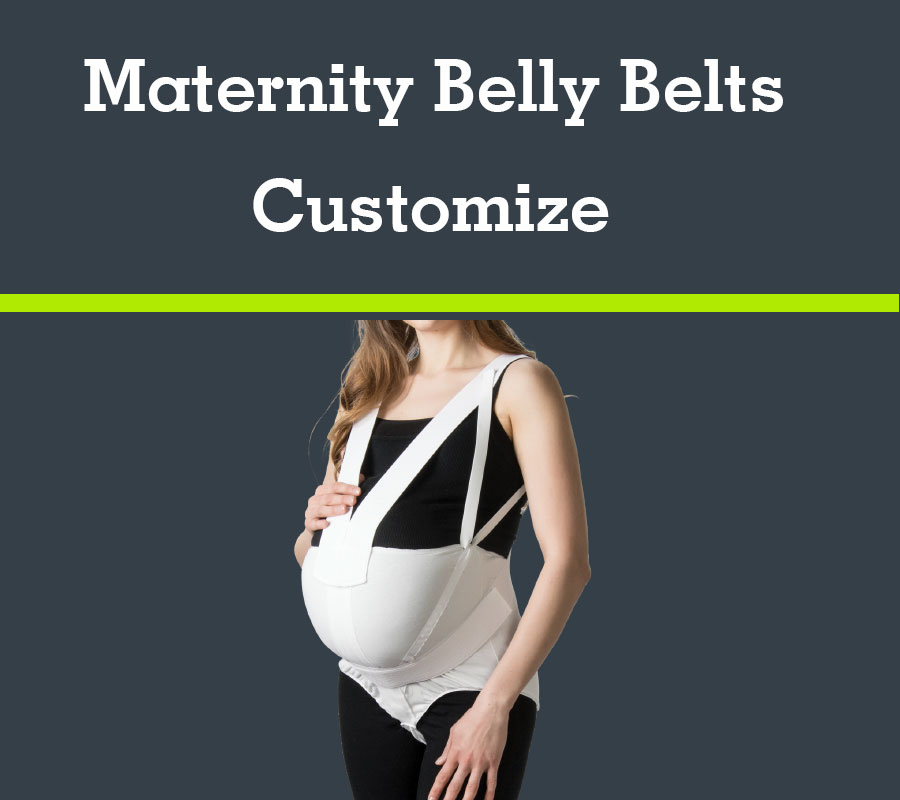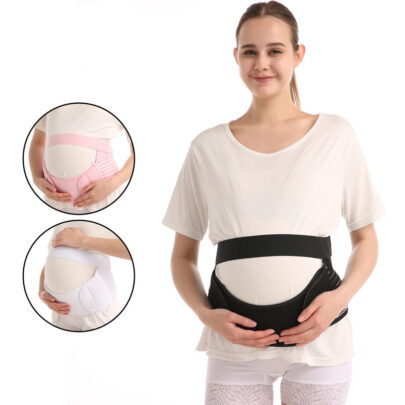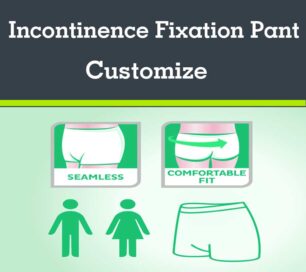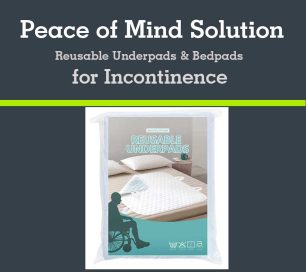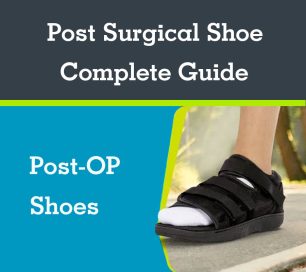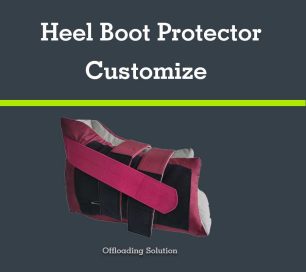Last Updated on 3 years by admin
We are Maternity Belly Band manufacturers & OEM manufacturers In China, Customize design, Inquiry Now for Wholesale Price
Why produce the Maternity Belly Band for Pregnancy?
Maternity Belly Band is produced for Pregnancy and it is designed to help evenly distribute weight around your hip and pelvis, to provide optimum support for your pregnancy belly. Helps to support your abdominal muscles during pregnancy and postpartum.
Pregnant women need a lot of support, and not just emotionally. Pregnancy comes with many different body changes, which means you may experience some discomfort as you adjust to your new normal. The good news? There are a number of products pregnant women can turn to for help during this time, like pregnancy pillows, morning sickness lollipops, and belly bands.
How Many different types of maternity belly belt?
As your body changes and your belly grows, you may notice pain specifically in places like your back, pelvis, and of course, your midsection. But belly bands are a great way to give your body some much-needed support and relief.
There are also several types of belly bands for different uses. In the early months of pregnancy, belly bands can be used for extra coverage on your newly growing bump so you can still wear your non-maternity clothes. As you get closer to your third trimester, you may be interested in using a belly band to help alleviate back discomfort, as mentioned above. Belly bands are even great for postpartum, as they can offer support after a c-section or help compress your midsection while you heal.
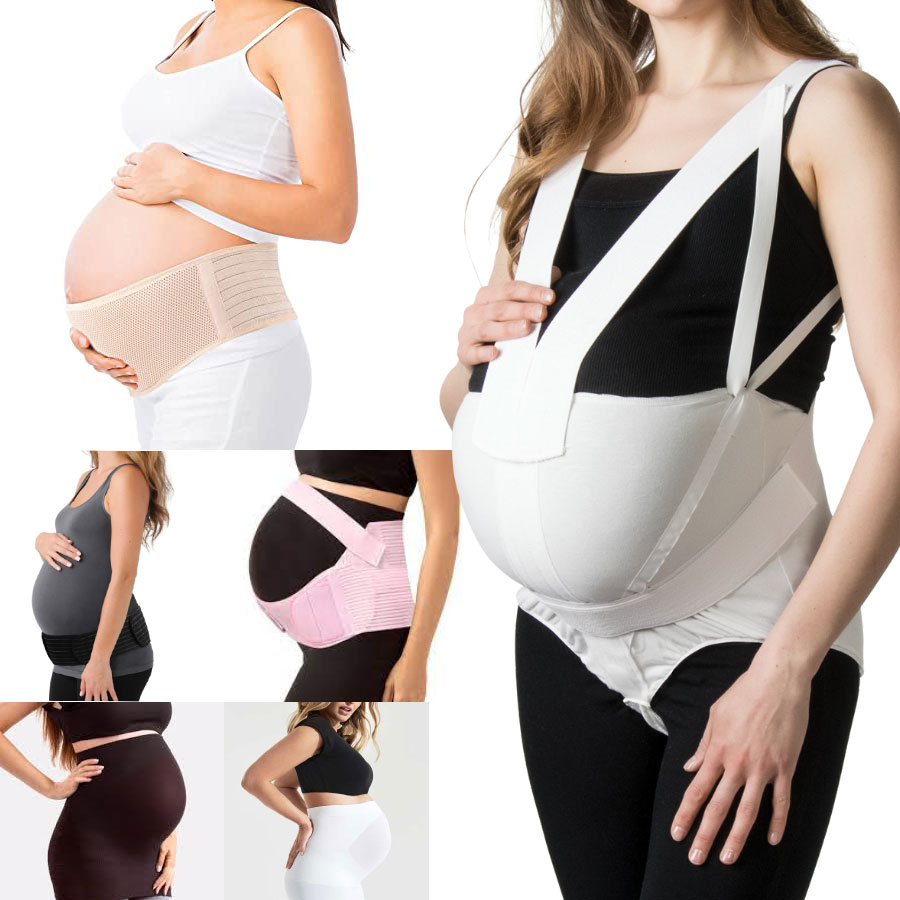
- Best Overall: Everyday Maternity Built-In Support Belly Band
- Best for Back Pain:Belly Support
- Best for Pelvic Pain: Maternity Support Belt
- Best for Plus Size: Plus Size The Ultimate Maternity Belt
- Best for Multiples: MetaCare Maternity Belt
- Best for Postpartum Belly Band
- Best for Exercise: Everyday Maternity Belly Support Leggings
- Best for Everyday Wear: Everyday Maternity BellaBand
- Most Versatile
- Best Affordable: Cozy Bump Pregnancy Tape
- Best Hip Belt: Body After Baby Metacare Maternity Support Belly Band
- Best for C-Section: Body After Baby Metacare Post C-Section Belly Band
- Best Lightweight: Belly Boost Support Belt
- Best for Sleep: Metacare Belly Belt
- Best Tank Top: SportSupport Maternity Support Crossback Tank
- Best with Shorts: Everyday Belly Support Maternity Shorts
What are the benefits of belly bands and belts?
Several different types of support garments are available for pregnant women and new mothers. It can be confusing to determine which products are most suitable for each pregnancy stage and postpartum phase.
Types of maternity support garment
The primary types of maternity support garments available for pregnant women and new mothers are:
Belly bands
Belly bands are flexible tube-like garments that women wear around the belly to extend the life of prepregnancy clothing by covering unbuttoned or unzipped pants. They also act as a layer to help cover areas of skin that become exposed as the belly expands.
Some belly bands provide mild compression and may offer the hips and lower back an element of support.
Belly bands remain popular among pregnant women and come in many different sizes, shapes, colors, and designs. They often have some elastic or a rubber trim to help prevent them from bunching up.
Belly bands are sometimes called belly sleeves or maternity or pregnancy bands.
Belly belts
Belly belts are rigid belts that wrap around the abdomen to help support the lower back, pelvis, hips, and abdomen during pregnancy.
Belly belts typically sit on top of clothing, although some people may wear them underneath. Belly belts are usually more narrow and strap-like than belly bands, especially the part that lies across the front of the body.
People may also refer to belly belts as maternity or pregnancy belts, braces, or straps.
Prenatal or maternity cradles
Prenatal or maternity cradles consist of a belly belt that wraps around the lower body and an upper strap that extends over the top of the belly. Together, these form a cradle for the belly.
While some prenatal cradles are available to buy as a single item, they often come as an add-on to belly belts or in combination packs with them.
Maternity support clothing
Many maternity briefs and leggings contain an underbelly supportive belt and a non-binding waistband, which provides a stretchy space to accommodate the pregnancy bump. Most maternity briefs and leggings claim to help support the lower body, including the legs, buttocks, and hips.
Some maternity tops contain supportive sports bras and belly bands that absorb the pelvic weight. Most supportive maternity tops claim that their structure helps reduce stress on the upper body.
Postpartum belly wraps and girdles
Postpartum belly wraps and girdles contain multiple layers of alternating stretchy and rigid wrapping that extends from under the breasts to the hips. They are also sometimes called belly bands.
Although there is scant unbiased research to support their use, most postpartum belly wraps claim to help by:
- Supporting the lower back
- Speeding up postpartum recovery, especially after a cesarean delivery
- Improving blood circulation
Potential pros and cons
Below, we consider the possible benefits of certain maternity support garments, as well as some of their limitations.
Belly bands
The design of belly bands allows them to extend a pregnant woman’s wardrobe by covering the lower abdomen. The intention is not usually to offer much support, although different brands provide various options.
There is little to no scientific research to back the claims that some belly bands do offer support.
The potential benefits of belly bands include:
- Reducing the need to buy new clothing. Belly bands can help prolong the life of maternity clothes. Some women feel uncomfortable with clothing that exposes their growing bellies, but the bands cover this area. As a result, a pregnant woman may have to buy new maternity clothing less often.
- Are usually suitable both during and after pregnancy. Many women are most likely to wear belly bands during the earlier months of their pregnancy when they require less support. However, women can also use belly bands during the postpartum months as they readjust to their prepregnancy clothing.
- Often inexpensive. In addition to potentially saving women money by extending the life of their prepregnancy clothing, some types and brands of belly band can be very affordable.
The potential cons of belly bands include:
- Lack of support. While different brands vary in their design, most belly bands only offer minor compression at best and provide little to no real support.
- May bunch up. Some belly bands do not come with special trims to hold them in place and reduce bunching. Even belly bands with these trims might bunch up or ripple because they are not rigid and do not have binding, ribbing, or Velcro to secure their positioning.
- Lack of research. There is currently little scientific research to either support or discourage the use of belly bands during pregnancy.
Belly belts
Belly belts aim to offer pregnant women support by taking some of the weight of the growing belly.
The potential pros of belly belts include:
- May help encourage proper posture. Belly belts could help stabilize a pregnant woman’s abdomen and lower back by taking some of the weight of her belly and by evening out her center of gravity. A 2018 study trusted Source involving 90 pregnant women found that wearing a maternity support belt slightly improved posture during all trimesters.
- Might lower the risk of falls. Belly bands may reduce the risk of falls for pregnant women by stabilizing their pelvis and improving their balance. A 2014 study trusted Source that included 90 pregnant women found that wearing a maternity support belt improved balance and reduced the risk of fall during all trimesters.
- Make it easier to exercise. According to the American College of Obstetricians and Gynecologists, wearing a belly belt during the later stages of pregnancy may help make some activities, such as running or walking, more comfortable. A belly belt may also help pregnant women avoid injury while exercising.
- May help reduce some pregnancy aches and pains. Belly belts may help alleviate some of the aches and pains that can occur during pregnancy by taking some of the belly’s weight and helping stabilize the body.
While there is still not enough scientific evidence to fully support the use of belly belts to reduce pregnancy pains, a few early studies indicate some potential benefits from wearing belly belts when pregnant.
A 2017 study trusted Source evaluated 46 pregnant women with pelvic girdle pain. Pelvic girdle pain usually occurs in either the back of the thigh or the space between the middle of the pelvis and the pubic bone. Women with pelvic girdle pain usually have trouble walking and standing for extended periods.
In the women who wore pregnancy belts frequently for short periods, the belts seemed to reduce the intensity of pain and make daily tasks more manageable.
A 2015 review trusted Source of methods for relieving pregnancy-associated pain in the lower back and pelvis found that pelvic belts and acupuncture were the only methods with strong positive evidence to support their use.
The potential cons of belly belts include:
- Unsuitable for prolonged use. Women should avoid wearing more constrictive garments, such as belly belts, for too long at any one time because they may decrease blood flow to the abdomen and growing baby.
- Can be expensive. Many belly belts can be expensive, especially those that are more rigid or have thicker padding. As they play a functional role rather than a cosmetic one, belly belts should ideally be of reasonable quality and robustness.
Wearing a belly belt for too long could cancel out the benefits of wearing one. In a 2017 study trusted Source in which 46 pregnant women wore one of two different pelvic belt models, both belts reduced pelvic girdle pain but only when the women wore them for short intervals a few times a week.
Other maternity support garments
Maternity support garments range from inexpensive, basic underwear to expensive, multi-piece cradles and girdles. However, there is virtually no scientific evidence to either support or discourage the use of most of these types of garments.
Women looking for the right maternity support garment may wish to consider the following criteria:
- What the product is for
- How comfortable the product is to wear
- Their size and body shape
- Product price and budget
- Available colors, patterns, styles, and designs
- Product quality
- How long they will use the product for
- How easy the product is to obtain

